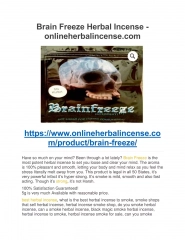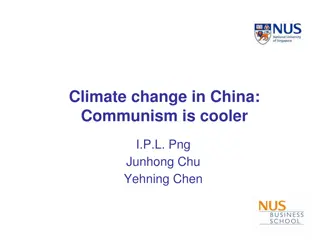To be able to learn how substances melt or freeze at different temperatures.
Explore the three states of matter – solid, liquid, gas – and learn about the processes of melting and freezing. Discover how substances change state based on temperature variations, such as ice melting into water or water freezing into ice. Dive into the concepts of melting point, freezing point, conservation of mass, and reversible state changes through informative visuals and engaging experiments.
Download Presentation

Please find below an Image/Link to download the presentation.
The content on the website is provided AS IS for your information and personal use only. It may not be sold, licensed, or shared on other websites without obtaining consent from the author.If you encounter any issues during the download, it is possible that the publisher has removed the file from their server.
You are allowed to download the files provided on this website for personal or commercial use, subject to the condition that they are used lawfully. All files are the property of their respective owners.
The content on the website is provided AS IS for your information and personal use only. It may not be sold, licensed, or shared on other websites without obtaining consent from the author.
E N D
Presentation Transcript
To be able to learn how substances melt or freeze at different temperatures.
States of matter There are 3 states of matter, can you name them? S .. L .. G .. What do we know about them?
video (6) Melting and Freezing | BBC Bitesize | science - YouTube
Melting point If ice (solid) is heated, it changes to water (liquid). This change is called melting. Ice melts at 0 C turning into a liquid (water) C = degrees Celsius The table summarises what happens to the particles in a substance when it gains energy, and it melts (changes state): The rough temperature chocolate starts to melt at is 35 C
Change of state Solids and liquids can be changed from one state to another by heating or cooling. Heat melts a solid and turns it into a liquid. Cooling freezes a liquid into a solid. The process of melting and freezing is reversable you can change them back to their original state The particles in a substance stay the same when it changes state - only their closeness, arrangement or motion change. This means that the mass of the substance stays the same. For example, 10 g of water boils to form 10 g of steam, or freezes to form 10 g of ice. This is called conservation of mass.
Freezing Point If water (liquid) is cooled, it changes to ice (solid). This change is called freezing. The table summarises what happens to the particles in a substance when it loses energy, and it freezes or condenses (ie changes state): Water freezes at 0 C
Quiz What are freezing and melting? - BBC Bitesize
Home Experiment on melting: Find out the different melting point of different chocolate (dark and white) 1. Put some hot water (no more than 50 c) into a beaker Put in a thermometer Take the temperature of the chocolate when not yet melted Add the chocolate to a different beaker and put that beaker inside the hot water Stir and take temperature when it starts to melt and when it has fully melted Record your findings in a table as seen here Repeat steps 1-6 with white chocolate Equipment: Hot beakers x2 (one big and one smaller) Dark chocolate White chocolate Water Thermometer 2. 3. 4. 5. 6. 7.
Extension: Questions based on your experiment: 1. You are going to Spain on holiday and you take some chocolate with you. Considering it s melting point, which chocolate would you bring and why? Use the findings collected in your experiment 2. How would you make sure it won t melt anyway?
Home experiment on freezing: 1. Fill 3 balloons up with water to make small balloons (don t make them too big, they will have to fit in the freezer!) 2. Freeze the balloons over night 3. Take out the balloons and cut away the balloon from the ice Equipment: 3 balloons Salt Water Freezer Magnifying glass Torch Food colouring (optional) 4. Investigate using your magnifying glass and torch in the dark (are there patterns? What do you notice?) 5. Add cold water to one balloon (time how long it takes to melt) 6. Add hot water to one ice balloon (time how long it takes to melt) 7. Add salt to one ice balloon (time how long it takes to melt) 8. Add food colouring to the salty ice balloon and the melting becomes clearer (what do you notice?) 8. Record your findings in a table
Extension: 1. Why did the salt melt the ice? 2. What did I notice when I added food colouring to the ice balloons?























